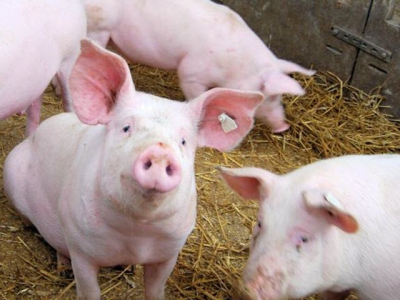PRRSV study compares strain virulence

High-virulence strain caused earlier and greater damage than low-virulence strain and also can attack lymphatic system and bone marrow.
Although initially described in the 1990s, the global swine sector has recently faced the emergence of new, more virulent strains of the porcine reproductive and respiratory syndrome virus that have, in some instances, devastated farms’ entire pig populations, according to the University of Córdoba in Spain.
Fighting this disease today is very difficult, as each strain of this virus behaves differently, so no effective vaccine against it has been developed.
A research group from the University of Córdoba, led by professor Librado Carrasco, has been researching PRRSV for years with the aim of helping develop vaccines that reduce mortality in the pig sector. However, for this, it is important to seek out similarities among the various strains.
“In our last study, we compared two strains: one of low virulence, on which we had been working since the discovery of the disease, and another of great virulence that is much less known,” explained Irene M. Rodríguez Gómez, one of the group’s researchers.
The study was carried out at the Animal Health Research Center in the province of Barcelona, Spain.
Three groups of pigs were used. The first was infected with the low-virulence strain and the second with the high-virulence strain. The third, used as a control group, helped determine the normal parameters of an uninfected animal, the announcement said.
The study lasted 13 days, during which temperatures and blood samples were taken daily and clinical symptoms observed. On the day of their euthanasia, a bronchoalveolar lavage (a procedure to obtain information about the airway cells) was performed, and lung samples were taken, the researchers said. In addition, other organs were used for other studies.
“The results indicated that the high-virulence strain caused earlier and greater damage than did the low-virulence strain,” Rodríguez said. In addition to the analysis of the symptoms and the lesions observed in the infected pigs, an exhaustive study of what happened with the cells in which the virus was housed, known as macrophages, was carried out.
“A reduction in this type of cells was observed in the lungs,” Rodríguez added. “These cells are of great importance when it comes to defending the organ, so their reduction causes the lung to be exposed to secondary infections, mainly bacterial, giving rise to other processes, such as bronchopneumonia.”
The study also determined that high-virulence strains attacked not only the lungs but also the organs of the lymphatic system, such as the thymus, or bone marrow, which was not perceived in the low-virulence strain.
The university noted that this study is part of a larger project — funded by Spain’s Ministry of Economy & Competitiveness — that aims to sequence the transcriptome of the alveolar macrophage in the context of this disease, something that has not yet been studied and that can yield an understanding of the behavior of PRRSV in infected animals.
Source: University of Cordoba, which is solely responsible for the information provided and is wholly owned by the source. Informa Business Media and all its subsidiaries are not responsible for any of the content contained in this information asset.
Related news
 Study sets calcium-to-phosphorus ratio for 11-22 kg pigs
Study sets calcium-to-phosphorus ratio for 11-22 kg pigs Pig diets sometimes contain 0.22% more calcium, on average, than stated on product label.
 Yeast supplement may support gut health for disease-challenged piglets
Yeast supplement may support gut health for disease-challenged piglets A yeast-based supplement may improve gut health and support piglet growth and weight gain following a disease challenge and weaning, researchers say.
 Spanish trial shows potential for protected benzoic acid in zero zinc oxide diets
Spanish trial shows potential for protected benzoic acid in zero zinc oxide diets Piglets fed diets containing the protected organic acid product showed higher average daily gain (ADG) and lower feed conversion ratio (FCR)